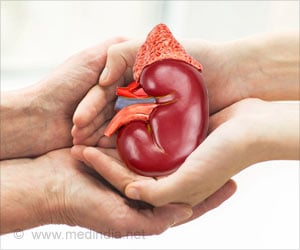In hemophilia, a mutated gene prevents the production of a critical blood-clotting protein. Treatments for hemophilia and other such genetic diseases, when they exist…
In hemophilia, a mutated gene prevents the production of a critical blood-clotting protein. Treatments for hemophilia and other such genetic diseases, when they exist, may consist of risky blood transfusions or expensive enzyme replacement therapy. But what if the body could be induced to begin producing these proteins, say by transplanting healthy tissue with the abilities that are lacking?
Prof. Yair Reisner and Ph.D. student Anna Aronovich of the Weizmann Institute’s Immunology Department, together with colleagues, showed, in research recently published in the Proceedings of the National Academy of Sciences (PNAS), how such a transplant might, in the future, be made feasible.Previous attempts to treat genetic disease by transplanting (mother to daughter) a spleen, an organ that can manufacture a number of the missing proteins in some such diseases, had made little headway due to the fact that the spleen is home to the immune system’s T cells – cells responsible for the severe immune responses against the recipient known as graft-versus-host disease (GVHD).
Reisner and his team revived the idea, with a twist. Over the past several years, he and members of his lab have been experimenting with tissue transplanted from pig embryos – a possible substitute for human donor organs. From this, they have learned that for each type of tissue, there is a window of opportunity during which cells taken from the developing embryo can be most successfully transplanted. Tissues taken too early, when they are still fairly undifferentiated, may form tumors, while those taken too late can be identified as foreign, causing the host to reject them.
By taking spleen tissue from embryonic pigs over the course of gestation, they found that the harmful T cells are not present in the tissue prior to day 42 of gestation. The scientists also found that tissue of this age exhibits optimal growth potential as well as secreting factor VIII, the blood-clotting protein missing in hemophilic patients. Thus, the scientists fixed the ideal time for spleen transplantation at 42 days. Hemophiliac mice with spleen tissue transplanted from pig embryos at this time experienced completely normal blood clotting within a month or two of implantation.
Although a number of problems would need to be surmounted before researchers could begin to think of applying the technique to humans, the Institute team’s experiment is “proof of principle” – evidence that transplanted embryonic tissue, whether human or pig, could one day help the body to overcome genetic diseases.
Source-Newswise
SRM





